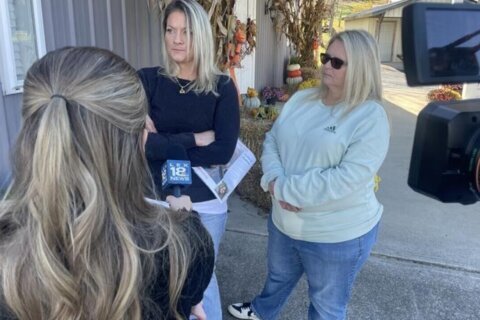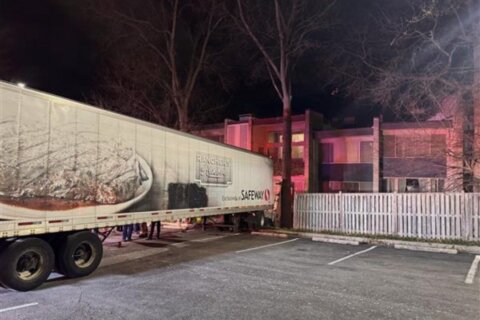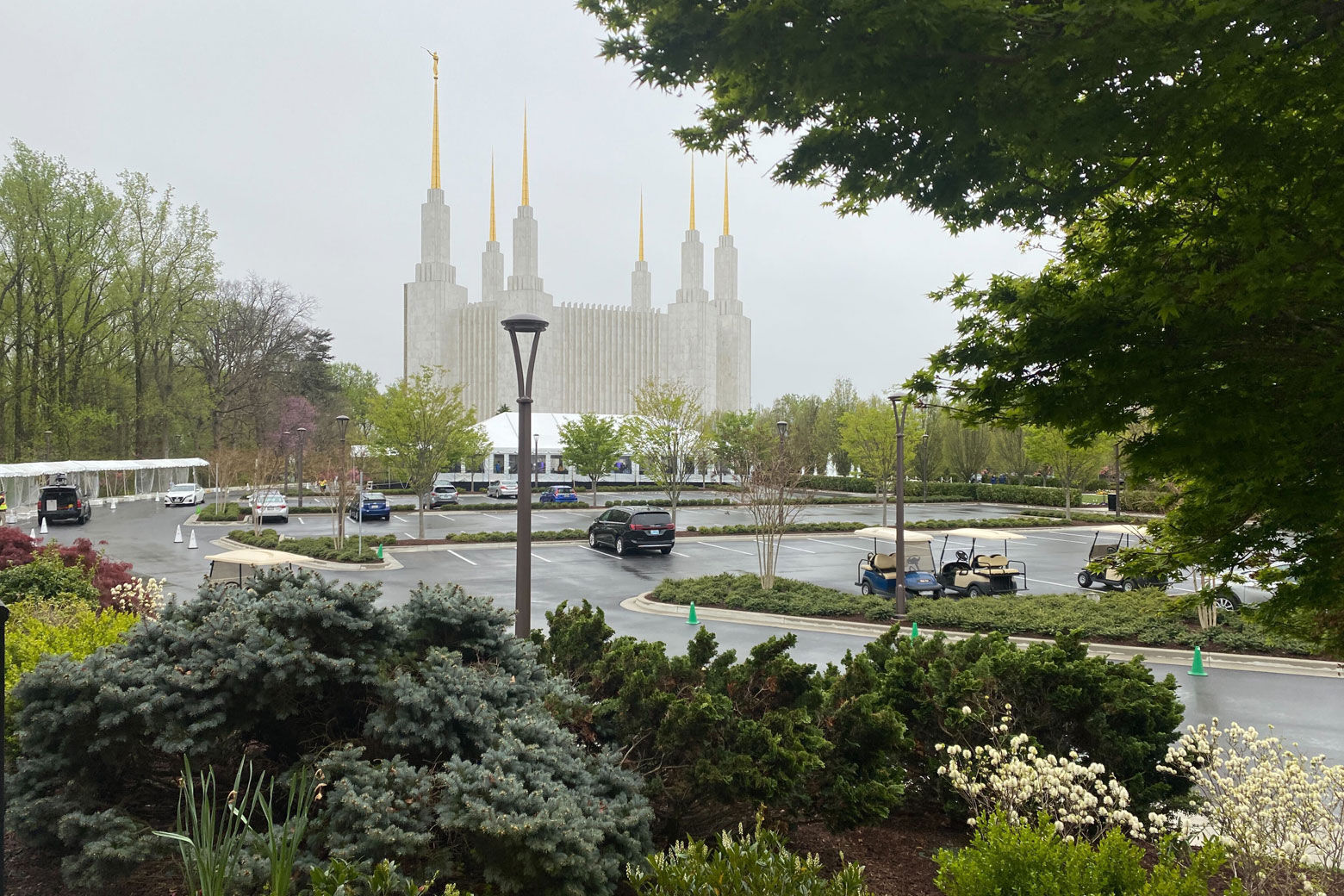
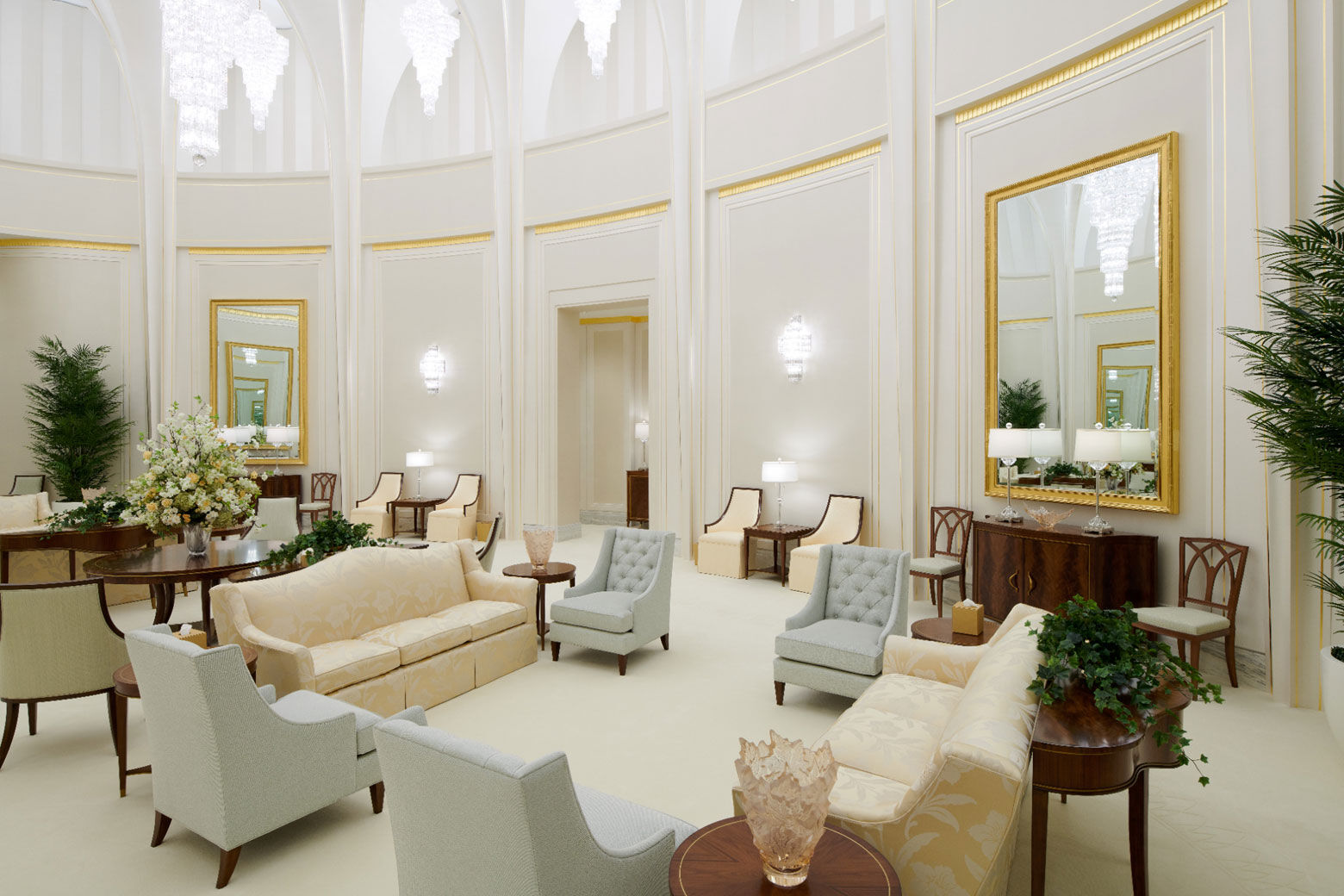
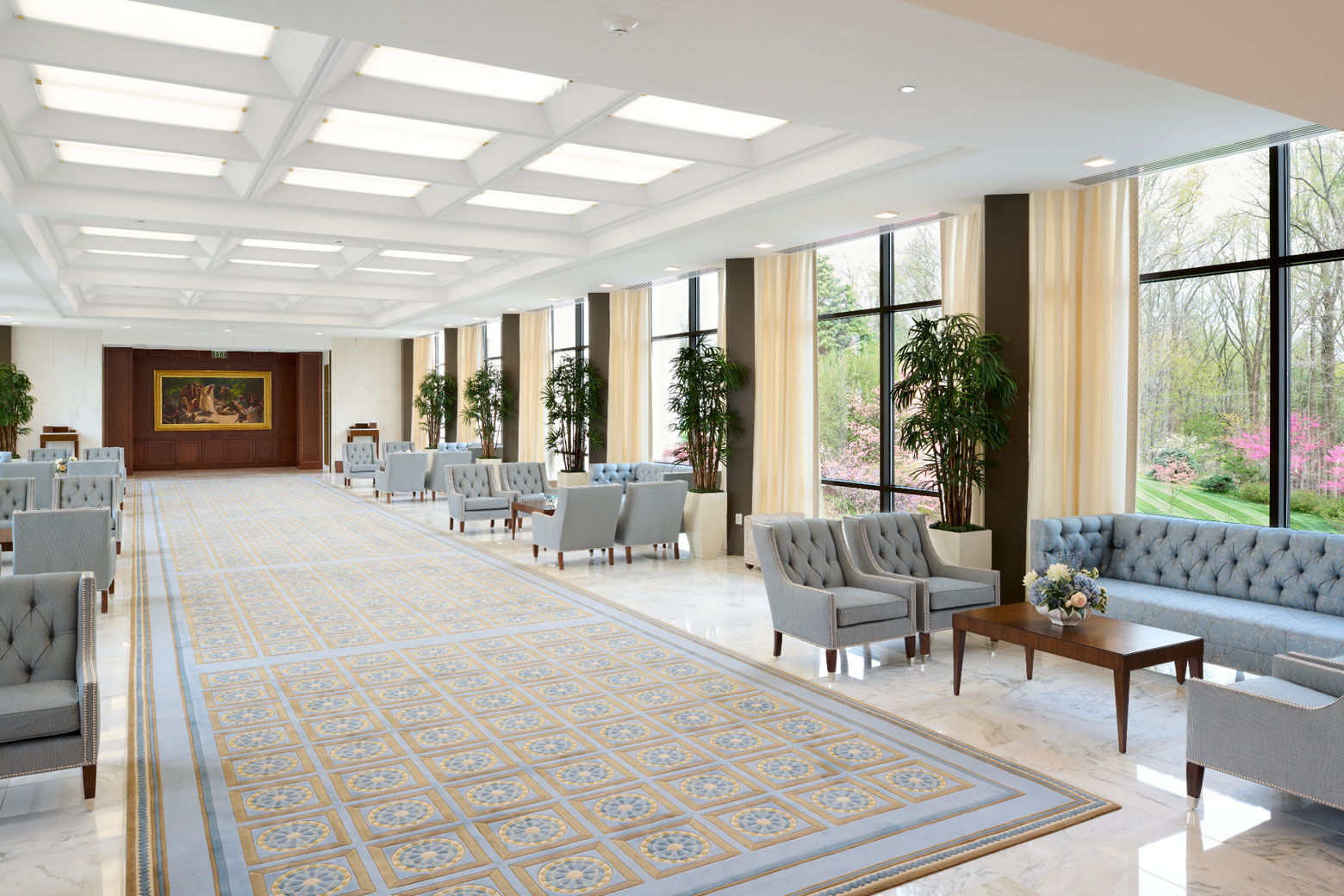
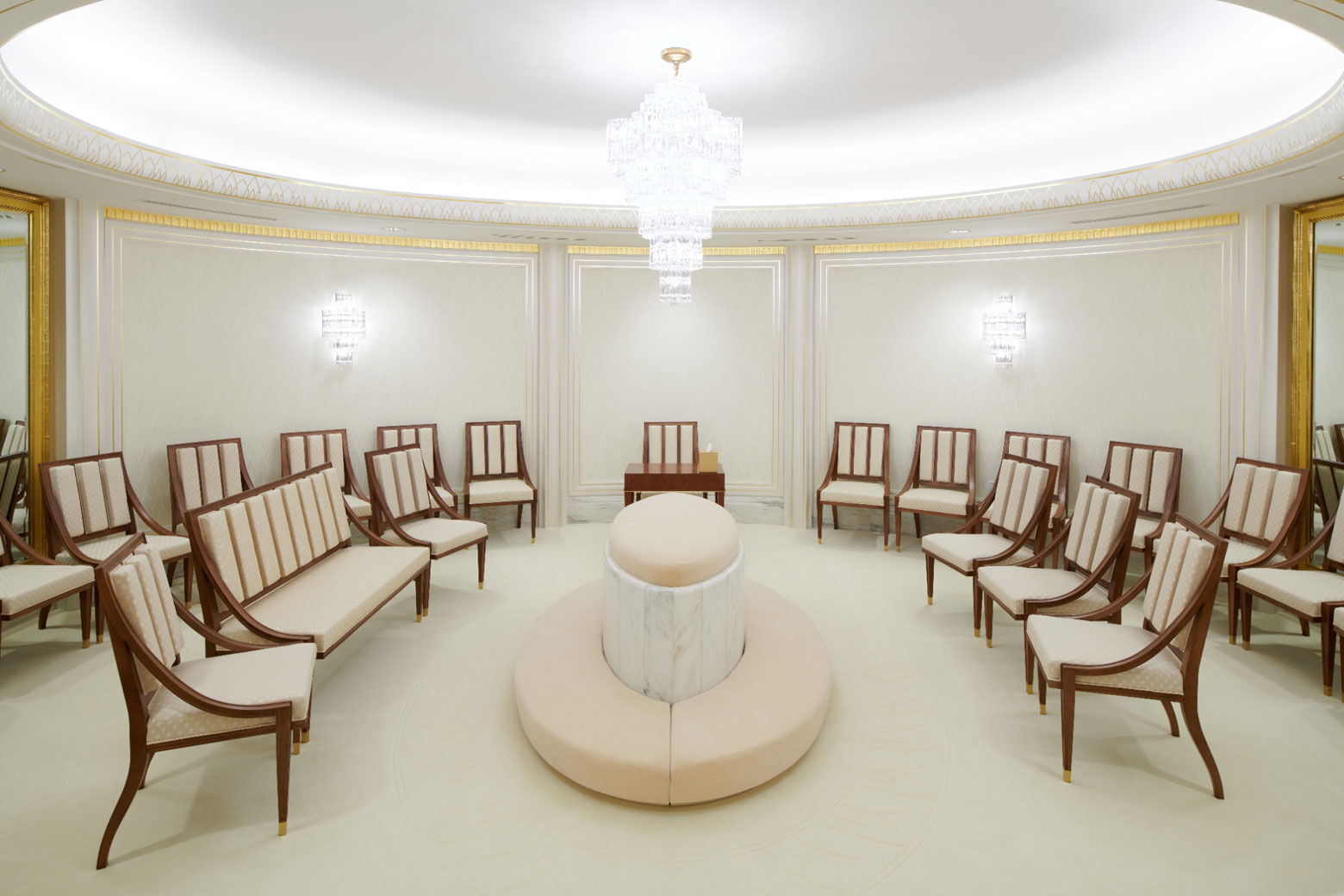
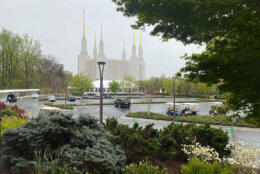
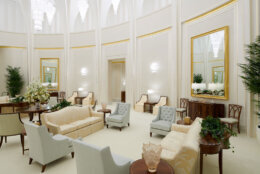
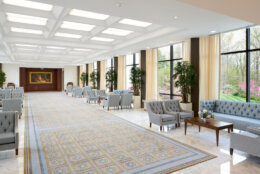
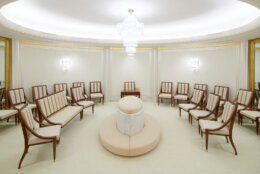
For the first time in about 50 years, the Mormon Temple that towers over the Outer Loop of the Capital Beltway will open to the public again. But not for long.
“We have been waiting so long for this opportunity,” said Anne Golightly, the director of communications at the beginning of a news conference Monday.
About a year and a half of renovations wrapped up in July 2020, and the doors would have opened to the public if not for the pandemic. Finally, church elders feel it’s safe enough to bring people in, including reporters for a tour Monday.
You have to cross a glass-enclosed bridge to enter into the main temple area — “a sign that you leave the world behind, all the commotion that has been out there in the world,” said Kathryn Colton, who with her husband Kent are the co-chairs of the Open House Committee. “You cross over the bridge into a place of peace.”
Once you do that, you might be surprised by what you see. If you’re not Mormon, but you’ve been in other cathedrals, it could be jarring.
“The one thing I was surprised by, there’s not a big room like you would see in a church,” said Maryland Gov. Larry Hogan, who was also there for the first tour.
The temple is primarily filled with smaller rooms, which each have their own purpose. There aren’t the marble floors and high ceilings generally associated with cathedrals, either: The rooms and hallways are filled with plush carpeting and furniture, all aimed at absorbing sound and making things quieter.
“The purpose of temples is to help us draw closer to God,” said Elder David Bednar.
The temple closes to everyone on Sundays. Typical Sunday services are held at other churches, known as Meeting Houses in the faith. The temple is the place for weddings and other milestone events, and they’re held there to bring about a closer connection with God.
“A temple is a dedicated sacred space where only those most sacred ceremonies will take place,” said Elder Kevin Duncan, executive director of the temple.
It’s also why the only people allowed inside once the dedication ceremony is held in August will be those who are at a certain status with the church.
The tour will take you downstairs first, to a baptismal font that harkens back to the temples of Solomon described in the Old Testament.
“In Solomon’s temple it talks about the fact of a molten sea on the back of 12 oxen,” said Elder Gerrit Gong. “Here in this temple and every temple we have this symbol of the ancient temple, the ancient rites, including the 12 oxen.”
The entire temple is centered on what’s known as the Celestial Room, which has an entrance on the fourth floor but whose ceilings reach up to the sixth floor. The room and the way it’s designed are symbolic.
“The intent is to lift your view toward God, to lift you up,” said Kathryn Colton. “It is filled with light. It is a place that is easy to contemplate. To sit and contemplate your connection to God. It is central to the design of the temple.”
With thick carpeting and plush furniture, it’s the quietest room in the temple too — the tour guides spoke about from outside, so there would be no talking inside. The rest of the rooms on the fourth through sixth floors are packed around the Celestial Room.
The assembly room on the top floor most resembles what most other people would expect a major church to look like.
This video is no longer available.
The renovations
The renovation project started years ago, and Dan Holt, who was the renovation project manager, said it went as smooth as could be expected.
“We actually completed the project in July of 2020, and so those last few months were really quite hectic” because of the pandemic, Holt said. “It’s been difficult because we’d love to show all the work that’s taken place inside.”
So what’s different now compared to the first 50 or so years the temple was open? Holt said to anyone who was already familiar with the inside of the temple, it’d be pretty nuanced.
“The intention of the design was to restore it back to its original design,” said Holt. “A lot of the layouts, a lot of the room sizes and spacing, is very similar.”
The lighting, baptistery, and some other finishes have been updated.
Over the years, he said, “you tend to kind of get some changes with furniture and designs that might have changed from the intent of the original architect,” said Holt. “So our purpose was to bring it back to kind of an original feel with a little bit of a modern capability in terms of energy efficiency, materials we were able to use.”
How can you go?
Tours are by invitation only through April 27. Starting April 28, everyone will be welcome through June 11. Hundreds of thousands of visitors are expected, Duncan said, and the temple could extend tours into July if the demand is high enough.
Tickets are free, and Duncan said many of the tickets for the first few weeks have already been reserved. You can get them online.
It’s open from 9 a.m. to 9 p.m. Monday through Saturday; you can’t take pictures inside.
If you want to park at the temple, you’ll need to reserve a spot, because the amount of available parking is fairly limited compared to the actual size of the temple grounds. Free shuttle buses will run from the Forest Glen Metro Station if you want to park there instead.
“We’re excited,” said Duncan. “If we could wish for one thing, it would be that everybody who wants to would come through the temple just to see who we are and learn of what we do.”


